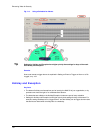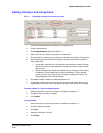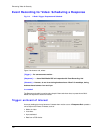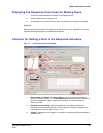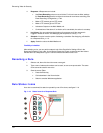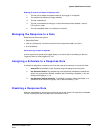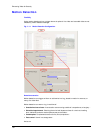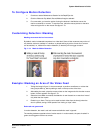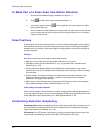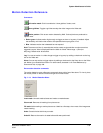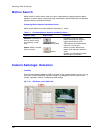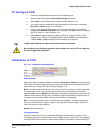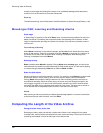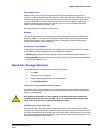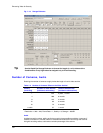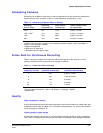
Enhancing Video for Security
118
To Mask Part of a Video Feed from Motion Detection
1. Check that Record/Motion/Image is selected, as in figure 7–11.
2. Click
, the Edit motion mask command; see figure 7–11.
3. You have the option of clicking to Show gridlines. The video image on the Video
tab is overlaid with a grid.
4. Click on areas of the video feed that you need to mask. To mask more than one cell with
one click, press and hold the Ctrl key on the PC’s keyboard while you click. This option
masks 3×3 cells at once.
False Positives
A false positive (also known as a false alarm) is a common situation that triggers motion detection
without posing a security risk. Sources of false positives can include: the sun’s glare reflected on
windows and cars, shadows, turning vehicle lights or building lights on and off, direct sunlight as
the day progresses.
Solutions
More than one technique can be used to reduce false-positives:
• Masking. You can mask areas of a feed where movement is of no concern.
• Scheduling. Alarms can be scheduled not to “ring” only at certain times. See
Alarms and
Scheduling, on p.
109.
• Camera placement. Software settings and scheduling can compensate for many camera
problems but not for all; for example: direct sunlight may require moving a camera or shielding
it from sunlight.
• Camera position. A camera in a building is an effective way to use motion detection, since
lighting can often be controlled. However, a window or vista, which shows a roadway or
pedestrians, can trigger motion detection.
• Motion search. There are cases when performing a timely search for motion is more effective
than constantly testing for motion. See
Motion Search on p. 120.
Video settings and motion detection
When an alarm based on motion detection is enabled, changing picture settings (brightness and
so on) can trigger that alarm. You can limit the triggering of alarms by using the Delay slider in the
motion detection controls. See
Cameras, on p. 65 and Events Defined, p. 187.
Customizing Detection: Scheduling
Scheduling alarms. Motion is detected at all times. There may be times when movement may not
be of any interest, such as during business hours. These times can be scheduled to not trigger
alarms. See
Alarms and Scheduling, on p. 109.
PTZ cameras. On a PTZ camera, motion panning, tilting or zooming triggers motion events. You
have the option of scheduling alarms for times when a PTZ camera is not moving.



